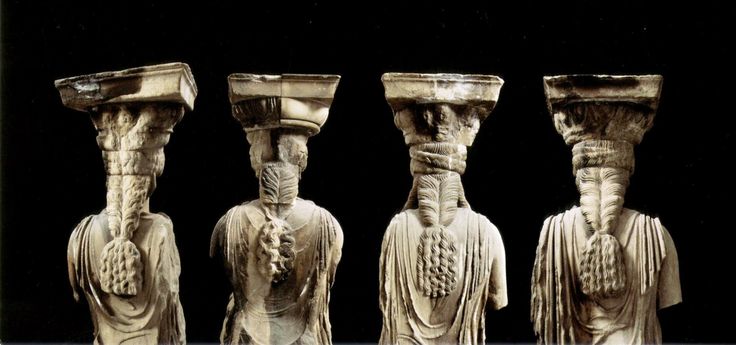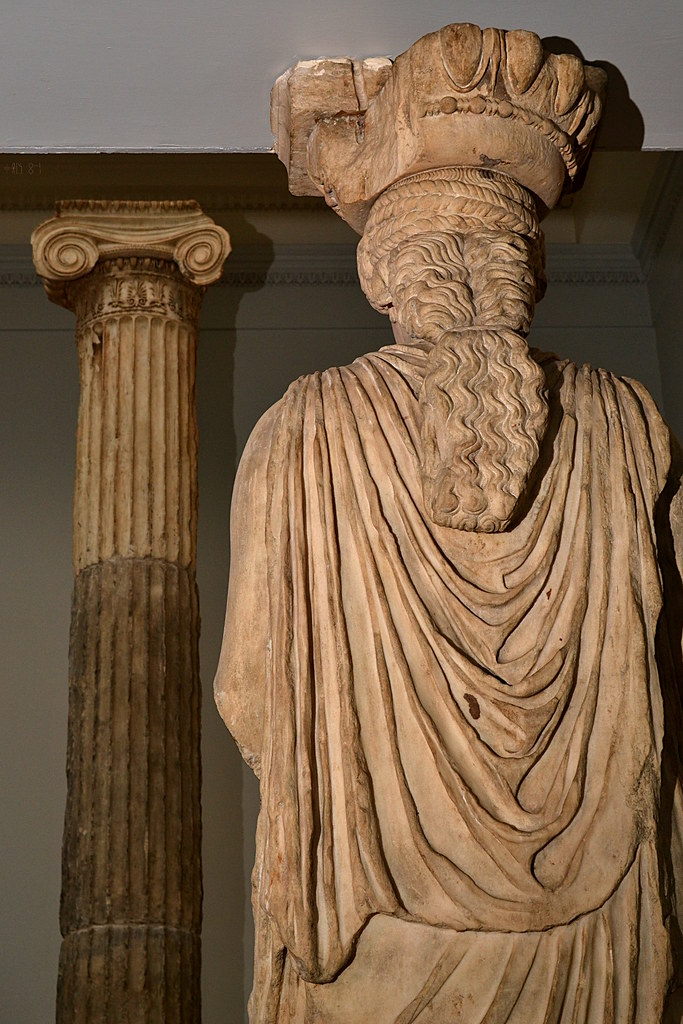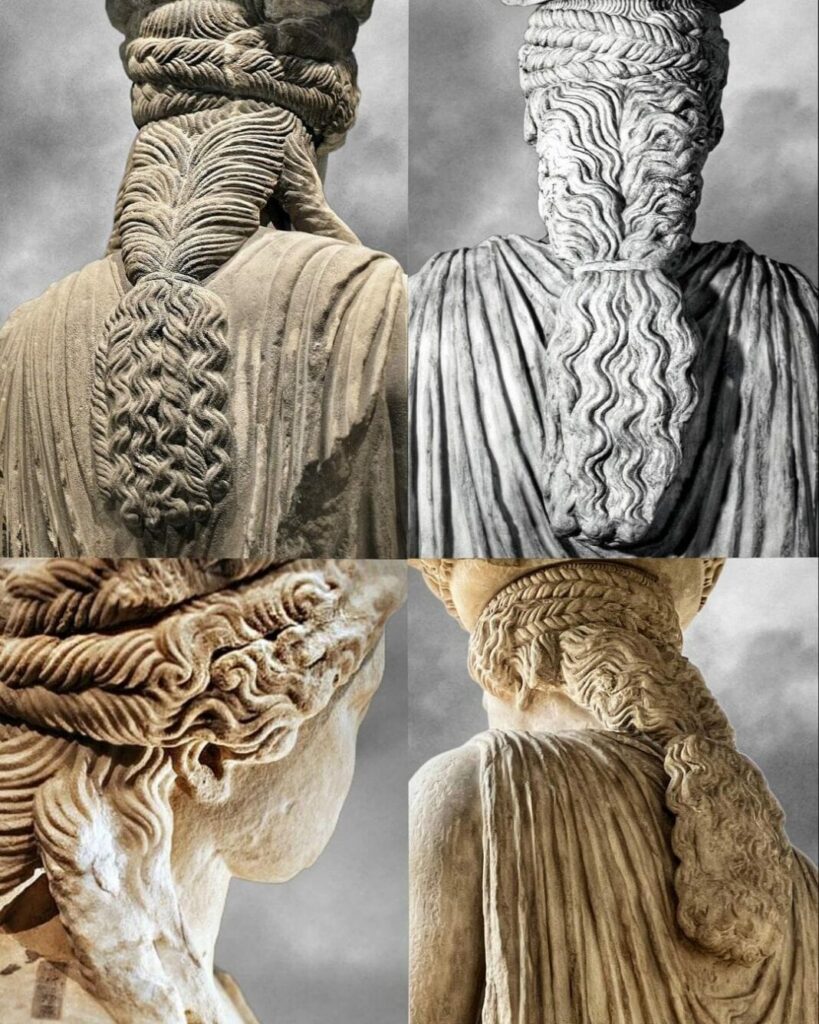The Acropolis of Athens, that iconic citadel towering over the Greek capital, is home to a remarkable architectural feature that has captivated visitors for millennia – the Caryatids. These striking female figures, used as columns to support the Erechtheion temple, are distinguished by their elegant, intricately braided hairstyles that have become a symbol of ancient Greek artistry.
The term “Caryatid” itself is derived from the ancient Greek word “Karyai,” referring to the town of Karyai in the Peloponnese region. These statues, dating back around 2,500 years, were likely inspired by the priestesses of the goddess Artemis who performed religious dances in Karyai. Their inclusion as architectural elements in the Erechtheion was a brilliant stroke of ancient Greek design, combining functional and aesthetic elements into a breathtaking whole.
The Meticulous Craftsmanship of the Caryatid Hairstyles
The Caryatids’ most striking feature is undoubtedly their ornate, braided hairstyles, which have become a hallmark of ancient Greek sculpture. Each Caryatid statue exhibits a unique and highly intricate coiffure, reflecting the exceptional skill and attention to detail of the original sculptors.

The braids themselves are fashioned in a remarkably consistent manner across the six surviving Caryatids, with six distinct braids cascading down the back of each figure. These braids are then looped and twisted in a complex pattern, creating a sense of elegant movement and flow that complements the statues’ stately poses.
Closer examination reveals the incredible craftsmanship involved in the creation of these hairstyles. Each braid is painstakingly rendered, with individual strands clearly visible and the twists and turns of the plaits meticulously carved. The overall effect is one of a living, organic quality, as if the Caryatids’ hair is frozen in a moment of graceful movement.
The Significance of Caryatid Hairstyles in Ancient Greece
The significance of the Caryatids’ hairstyles extends beyond their aesthetic appeal, as they were imbued with deeper symbolic meaning in ancient Greek culture. Hairstyles were an important aspect of personal and cultural identity in the classical world, and the elaborate coiffures of the Caryatids likely held specific connotations.

The braided hairstyles may have been inspired by the religious practices and cultural traditions of the Karyai region, where the Caryatid priestesses performed their rites. The intricate braiding patterns could have been associated with ideas of female power, fertility, and connection to the natural world – all important themes in ancient Greek religion and mythology.
Moreover, the Caryatids’ hairstyles may have been a deliberate artistic choice to evoke themes of strength and resilience. The stately, upright posture of the figures, combined with their ornate yet sturdy braids, convey a sense of unwavering support and endurance – qualities that would have been highly valued in the construction of a sacred temple.
The Caryatids Today: Preservation and Restoration Efforts

The Caryatid statues that once adorned the Erechtheion have unfortunately not been spared the ravages of time and history. Over the centuries, the originals have been subjected to weathering, vandalism, and even removal from their original site, leading to the loss or damage of several figures.
Today, only six of the original Caryatid statues remain. Five are exhibited in the Acropolis Museum in Athens, while the sixth resides in the British Museum in London, part of a collection acquired in the 19th century. The statues in the Acropolis Museum have undergone extensive conservation efforts to preserve their intricate details and delicate features, including the meticulous braided hairstyles.
Ongoing restoration work has included the use of advanced imaging and 3D scanning technologies to document the statues’ condition and guide preservation efforts. This has allowed conservators to meticulously clean and stabilize the sculptures, while also gaining valuable insights into the original sculpting and finishing techniques used by the ancient Greek artists.
Conclusion
The Caryatid statues of the Erechtheion are a testament to the remarkable artistry and craftsmanship of ancient Greece. Their iconic braided hairstyles, painstakingly carved with such skill and attention to detail, have become a symbol of the cultural and technical achievements of this extraordinary civilization.
As we gaze upon these majestic figures, we are transported back in time to the sacred precincts of the Acropolis, where the Caryatids once stood as silent sentinels, supporting the weight of the temple above. Their resilience and grace, embodied in their exquisite hairstyles, continue to captivate and inspire visitors from around the world, ensuring that the legacy of the Caryatids will endure for generations to come.
